Each quarter, we curate the best of the Knowledge Center—plus original research and conversations with the founders and executives navigating commercialization. Join a community of biomedical innovators who rely on our analysis to guide their decisions.

Stick-to-Skin Medical Devices: From Monitoring to Precision Healthcare
The stick-to-skin medical device market is undergoing a transformation that extends beyond simple technical advances. What began as basic adhesive patches for wound care...
Subscribe to Articles

Post-Surgical Patient Monitoring: Capturing the $3.5B Opportunity
Early Discharge Benefits The post-surgical patient monitoring market represents a $3.5 billion global opportunity, growing at 19% annually and driven by compelling...

Building the Evidence Strategy for Patient Monitoring Devices
Evidence Strategies for Multiple Stakeholder Demands FDA clearance or approval should mark the beginning of market success, not just the culmination of development...

Scaling Patient Monitoring Device Manufacturing
Significant Risk Between Prototype and Production The challenge is simple to state but difficult to execute: patient monitoring devices must achieve medical device...

Adhesive Engineering for Patient Monitoring Devices
The Complex Challenge of Adhesives Patient monitoring devices promise to transform healthcare delivery by enabling continuous visibility into patient status outside...

Leveraging Patient Insights for a Strong Innovation Pipeline
Beyond Current Products to Future Possibilities Market-leading medical device companies face a unique challenge: while their current products generate revenue and serve...

Building Long-Term Patient Partnership Programs
Adding Patient Partnerships to Your Competitive Assets For established medical device companies, the challenge isn't launching a single product. It's maintaining market...

Scaling Patient-Centric Marketing for Medical Devices
The Growth Stage Challenge For medical device companies that have successfully navigated the launch stage and achieved initial market traction, the growth stage presents...

Turning Patient Advocates into Market Catalysts
The Launch Acceleration Imperative The medical device launch phase represents a critical inflection point, where years of development investment may accelerate into...

Build Market Validation and Reduce Risk Through Early Patient Engagement
The Timing Paradox In the medical device industry, the earliest phases of the product lifecycle – ideation and R&D –represent both the greatest opportunity and the...
/Photos%20Finished/iStock-996054670_3%20Style_960x540.jpg?width=328&height=187&name=iStock-996054670_3%20Style_960x540.jpg)
Market Drivers for Biomaterials in Life Sciences
Biomaterials have become indispensable in life sciences where they play a critical role in developing innovation, advancing therapeutic solutions, and improving patient...

Quality and Regulatory Environment for Biomaterials
Biomaterials are an integral piece of innovation in life sciences, supporting a wide array of medical devices, prosthetics, drug delivery systems, and regenerative...

Manufacturing Techniques for Biomaterials in Life Sciences
Biomaterials are critical enabling technologies in the biomedical industry, they offer new avenues for innovative treatments, advanced medical devices, and complex...

Key Benefits of In Vitro Diagnostics
In vitro diagnostics (IVDs) are indispensable tools in modern healthcare, transforming patient care by enabling early disease detection, accurate diagnosis, personalized...

Basic Principles of Biomaterials in Life Sciences
Biomaterials are a foundational technology in life sciences, from medical devices to tissue engineering to drug delivery systems. Their design, development, and...

Agencies and Standards for Biomaterials in Life Sciences
The development and application of biomaterials in medical devices are critical for advancing healthcare technologies. As innovations in the biomedical field grow,...

Engineering Considerations for Biomaterials in Life Sciences
Biomaterials impact healthcare by enabling innovative solutions such as artificial organs, prosthetics, tissue engineering, and drug delivery systems. These materials...

The Clinical Workflow and Process for In Vitro Diagnostics
In vitro diagnostics (IVDs) are critical tools in healthcare, enabling the detection, diagnosis, and monitoring of diseases and health conditions by analyzing samples...

Industry Leaders in Biomaterials in Life Sciences
The biomaterials market is one of the most dynamic segments of the life sciences industry which generates innovations that are transforming healthcare. From orthopedic...

Common Types of In Vitro Diagnostics
In vitro diagnostics (IVDs) are essential tools in modern healthcare, enabling clinicians to accurately diagnose, monitor, and manage various diseases. Unlike...

Key Benefits of Biomaterials in Life Sciences
Biomaterials are one of the most versatile and innovative technologies in the life sciences industry. These materials have transformed research and development, enabling...

Validation and Documentation Requirements for Biomaterials
The life sciences industry is governed by a rigorous framework of regulations designed to ensure that all products, including biomaterials used in biomedical devices and...

Raw Materials Used in In Vitro Diagnostics
In vitro diagnostics (IVDs) are essential tools in modern medicine, providing clinicians with crucial information for disease detection, monitoring, and management. The...

Raw Materials Used In Biomaterials Applications
From the resilient metals that underpin orthopedic implants to the versatile polymers powering drug delivery systems, biomaterials play an essential role in a wide range...
.jpg?width=328&height=187&name=AdobeStock_346934311_3%20Style%20(960%20x%20540).jpg)
Common Applications of In Vitro Diagnostics
In vitro diagnostics (IVDs) have transformed the healthcare landscape, enabling precise, timely, and actionable insights into numerous health conditions. As essential...

Technology Overview of Biomaterials in Life Sciences
Biomaterials represent an evolving field at the intersection of materials science, biology, and engineering, serving as a cornerstone for many breakthroughs in...

Fundamentals of In Vitro Diagnostics
In vitro diagnostics (IVDs) are indispensable in modern healthcare, providing critical data for diagnosing diseases, monitoring patient health, and guiding treatment...

The Workflow & Process For Biomaterials In Life Sciences
Biomaterials are used across a wide array of applications in life sciences. In most cases these materials are highly engineered and fit for purpose to the particular...

Common Applications Of Biomaterials In Life Sciences
Biomaterials support many innovative medical interventions, from high-strength applications in orthopedics to precision uses in ophthalmology. These materials have...

Common Types Of Biomaterials In Life Sciences
From the resilient metals that underpin orthopedic implants to the versatile polymers powering drug delivery systems, biomaterials play an essential role in a wide range...
.jpg?width=328&height=187&name=AdobeStock_496665431_3%20Style%20(960%20x%20540).jpg)
Enabling Technologies For Biomaterials In Life Sciences
The field of biomaterials has experienced remarkable progress, thanks to the emergence of several enabling technologies. These advancements have revolutionized the...
/Photos%20Finished/iStock-1137465658_3%20Style_960x540.jpg?width=328&height=187&name=iStock-1137465658_3%20Style_960x540.jpg)
Emerging Applications of Biomaterials in Life Sciences
Biomaterials are an exciting area of biomedical innovation and growth, with emerging applications across the life sciences field. This includes bioactive scaffolds,...
/Photos%20Finished/BK2_1158_3%20Style%20(960%20x%20540).png?width=328&height=187&name=BK2_1158_3%20Style%20(960%20x%20540).png)
The Decline of American Manufacturing and Why Today’s Leaders Should Care
Three well-established economic views are commonly credited with the decline of manufacturing in America. All three are wrong. Over the last 50 years, structural changes...
/Photos%20Finished/BK2_7998_3%20Style%20(960%20x%20540).png?width=328&height=187&name=BK2_7998_3%20Style%20(960%20x%20540).png)
A New Advanced Manufacturing System Is Emerging - Are American Businesses Going to Miss It?
A new dawn of advanced manufacturing is here because of technological advancement. But when we envision these new technologies in manufacturing plants, we draw narrow...
/Episode%207%20(Access%20Vascular)/Photos%20Finished/AccessVascular05222022BTS0051_3%20Style%20(960%20x%20540).png?width=328&height=187&name=AccessVascular05222022BTS0051_3%20Style%20(960%20x%20540).png)
It's Time To Change The Narrative About American Manufacturing
A 50-year-old American has been completely consumed with a negative narrative about manufacturing for their entire life. This was not only their guidance counselor...
/Photos%20Finished/BK2_4955_3%20Style_1200x600.jpg?width=328&height=187&name=BK2_4955_3%20Style_1200x600.jpg)
Water Purification Methods for Pharmaceutical Uses
Water purification is critical at every phase of production in a pharmaceutical or medical device manufacturing setting. From pre-treatment to injection, distribution,...

Using Polystyrene In Biomedical Applications
Polystyrene is one of the most versatile plastic resin materials and is found in many widely used products. This strong, solid plastic is useful in many manufacturing...

6 In Vitro Diagnostic Trends
The global in vitro diagnostics (IVD) market has weathered the effects of COVID-19 to register impressive growth in 2020 and 2021. A recent report reveals the world's...

Using Polyvinyl Chloride In Biomedical Applications
Polyvinyl chloride is the third most produced plastic worldwide, just behind polyethylene and polypropylene, and it is the most widely used plastic in medical...

Medical Device Market Snapshot: Opportunities for 2021 & Beyond
The response to COVID-19 has served as an ongoing lesson that is driving significant changes in the healthcare system. As with global manufacturing, the pandemic brought...
/Photos%20Finished/iStock-1056384422_3%20Style_960x540.jpg?width=328&height=187&name=iStock-1056384422_3%20Style_960x540.jpg)
5 Key Considerations When Designing Drug Delivery Devices
In the current highly competitive medical device marketplace, drug delivery devices are among the fastest growing segment. Drug delivery and fluid management devices are...

Using Polyamides In Biomedical Applications
Chemists and life scientists define polyamides as polymers whose repeating molecular units are chained together with amide links. These materials integrate hardness,...

The Future of Wearables & Patient-Operated Devices
Wearables such as remote patient monitoring sensors and stick-to-skin devices have revolutionized the health care industry. One can now easily manage their chronic...
/Photos%20Finished/BK2_3531_3%20Style_1200x600.jpg?width=328&height=187&name=BK2_3531_3%20Style_1200x600.jpg)
Supply Chain Risk: How to Identify and Manage Liability
In today's highly competitive marketplace, healthcare organizations and medical device manufacturers need to prioritize supply chain risk management to avoid costly...
/Photos%20Finished/iStock-1211210093_3%20Style_960x540.jpg?width=328&height=187&name=iStock-1211210093_3%20Style_960x540.jpg)
Effects of Water Impurities in Laboratory Use
Water impurities can alter the quality of results in a pharmaceutical setting. These impurities can be introduced from the water supply during the purification process...
/Photos%20Finished/iStock-1419268056_3%20Style_960x540.jpg?width=328&height=187&name=iStock-1419268056_3%20Style_960x540.jpg)
Water Quality and Contaminants in Laboratory Use
Water is one of the major utilities used by the pharmaceutical industry. It is used during the production of the finished product or as a cleaning agent for rinsing...

Using Biopolymers In Biomedical Applications
Biopolymers have revolutionized lifesaving treatments and medical devices used in healthcare today. Scientists use these macromolecules to deliver drugs to patients,...

Using High Temperature Thermoplastics In Biomedical Applications
High temperature thermoplastics are melt-processable plastics with extreme heat resistance. They are also referred to as high performance or engineering polymers due to...

Sterilization Compatibility for Natural Polymers
Unlike synthetic polymers derived from petroleum, natural polymers occur in nature and can be extracted. These polymers are either formed by addition polymerization or...
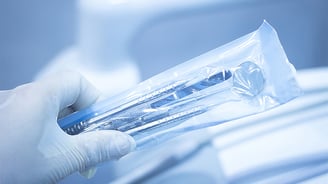
Sterilization Compatibility for Synthetic Polymers
Synthetic polymers are essential in various medical applications as they are used to make a range of healthcare devices. They replace glass, metal, and other standard...

Using Elastomeric Polymers In Biomedical Applications
The word elastomer is derived from the term 'elastic polymer.' Elastomers are rubbery materials composed of polymers that can return to their original shape after being...

Why Do Medical Devices Need to Go Through Validation?
The Contract Development and Manufacturing Market is expected to grow to $100 Billion by 2025, an 11.4% CAGR. This growth is partially fueled by the increasing burden of...
/Photos%20Finished/iStock-867736226_3%20Style_960x540.jpg?width=328&height=187&name=iStock-867736226_3%20Style_960x540.jpg)
Using Acetals In Biomedical Applications
Acetals are easy to machine, general-purpose engineering plastics of outstanding dimensional stability. They are high molecular and high crystalline plastics produced by...

Using Fluoropolymers In Biomedical Applications
A fluoropolymer is a fluorocarbon-based polymer that has multiple carbon-fluorine bonds. Fluoropolymers boast of high resistance to bases, acids, and solvents. They also...

Using Polycarbonates In Biomedical Applications
Polycarbonates are a group of thermoplastics polymers with Bisphenol (A) parts and carbonate groups in their chemical structure. Polycarbonates are strong, rigid,...
/Photos%20Finished/BK2_1859_3%20Style_1200x600.jpg?width=328&height=187&name=BK2_1859_3%20Style_1200x600.jpg)
3 Design Considerations for Manufacturing Medical Grade Face Masks
Surgical masks and respirators are an essential part of the personal protective equipment used in the healthcare sector to combat respiratory infections. They're worn...
/Photos%20Finished/_BK25223_3%20Style%20(1200%20x%20600).png?width=328&height=187&name=_BK25223_3%20Style%20(1200%20x%20600).png)
7 Steps to Effectively Dual Source a Supply Chain for Medical Devices
Dual sourcing is considered a hassle by some traditional medical device manufacturers. After all, the procurement process is faster and more straightforward when you...

Development of Paper-Based Microfluidics for Point-of-Care Testing
Developments in the in vitro diagnostics (IVD) industry have been driven by global trends such as the prevalence of chronic diseases, an aging population, the increase...

Application of Molecularly Imprinted Polymers in POC Diagnostics
Standard disposable point-of-care diagnostic (POCD) devices are making a positive impact on patient-based healthcare settings worldwide. These devices are convenient and...
/Photos%20Finished/BK2_5223_3%20Style_1200x600.jpg?width=328&height=187&name=BK2_5223_3%20Style_1200x600.jpg)
6 Filtration Challenges in Downstream Biopharmaceutical Production
Membranes and membrane processes are efficient filtration tools in the manufacturing of biopharmaceutical products. These tools continue to evolve in response to new...

Single-Use Endoscopes: A Trend Towards Better Patient Safety
Design continues to save lives. The disposability designed into single-use medical devices such as surgical masks, syringes, and suction catheters has reduced the risk...

5 Things to Keep in Mind When Trying to Reverse Engineer Adhesive
The process of reverse engineering is demanding work: an analyst initially works with limited information about a product and uses that information to analyze it to...

Membrane Device Development for In Vitro Diagnostics
The surging trends of an aging global population, the prevalence of chronic diseases, and the rise in outbreaks of infectious diseases have helped to expand the growth...

Membrane Materials and Applications for In Vitro Diagnostics
Industrially manufactured membranes play a vital role in the effectiveness of in vitro diagnostics instruments and procedures, such as protein assays and liquid/gas...
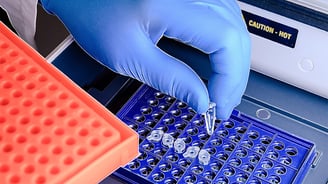
In Vitro Diagnostics Trends: Faster, Smarter, and More Personalized
According to a 2016 report in PLoS One, between 60 and 70% of medical decisions are made based on the results of in-vitro diagnostics (IVD) testing. Using the evaluation...

Common Material Challenges in Miniaturizing In Vitro Diagnostics
The miniaturization of diagnostic tests comes with several unique challenges. The aim is to transform the fast turnaround time and specificity of Lab on a Chip (LOC)...

Demystifying Failure Mode and Effects Analyses (FMEAs) in Medical Device Manufacturing
Failure Mode and Effects Analysis (FMEA) is a design review tool used to identify and correct all possible failures in a product, service, design or manufacturing...

Breakdown of a Lateral Flow Test Strip
Lateral flow test strips are simple, easy-to-use devices that can detect the presence or absence of a target analyte (chemical or substance) in a specimen provided by a...

Lab-on-Chip: an Overview
Lab-on-chip (LOC) technology has the potential to provide a robust and portable point-of-care (POC) toolset at a fraction of the size and cost of conventional laboratory...

Biocompatibility Testing for Surface Medical Devices
All medical device companies must subject their products to a volley of FDA-approved tests to establish the safety of their devices. A particular series of these tests...

3D Bioprinting in Orthopedics
The use of flexible materials in the medical field has revolutionized the treatment of a variety of conditions. Orthopedics, in particular, has the potential to benefit...
/Board%20of%20Directors/Headshot%20-%20Charlie%20Cooney%20(600%20x%20300).jpg?width=328&height=187&name=Headshot%20-%20Charlie%20Cooney%20(600%20x%20300).jpg)
Interview with Professor Charles Cooney on Bioprocessing
We had the opportunity to sit down with Charles L. Cooney (Robert T. Haslam Professor of Chemical Engineering, MIT) to discuss what he sees as being on the horizon for...
/Photos%20Finished/iStock-1050564010_3%20Style_960x540.jpg?width=328&height=187&name=iStock-1050564010_3%20Style_960x540.jpg)
Challenges and Risks in Batch Bioprocessing
Batch bioprocessing is the industry standard in biopharmaceutical production. Although the advancements in biomedical technology that have allowed for batch...
/Photos%20Finished/_BK26332_3%20Style_1200x600.jpg?width=328&height=187&name=_BK26332_3%20Style_1200x600.jpg)
Mutual Dependence: Continuous Bioprocessing and Single-Use Systems
The rise of continuous biomanufacturing (CBP) is tied to the ascendance of single-use systems (SUS). Single-use disposables enable CBP by providing a high degree of...

Innovations in Detectors and Sensors Enabling Continuous Bioprocessing
It has been known for some time that continuous bioprocessing would be a useful strategy in biopharmaceutical production, but it was not quite possible on an industrial...

What Does the Implementation of EU-MDR Mean?
The passing of the EU Medical Device Regulations (EU-MDR) is forcing medical device manufacturers to update their clinical testing practices and reporting mechanisms....

Bioprocessing Single-Use Technologies - A Primer
According to BCC Research, the global single-use technology market will reach over $4.3 billion by 2021. The most significant increase will be in the highly adaptable...

Characteristics of Successful Medical Device Product Launches
The creation of a new medical device involves many steps from initial concept to finished product. Every year billions of dollars are invested in research and...

Is Aliphatic TPU Foam All it's Cracked Up To Be?
Polyurethane raw materials themselves have long seen use as dressings in the medical industry, but aliphatic thermoplastic polyurethane (aliphatic TPU) foams are gaining...

Advances in Medical Fiber-Optic Technology May Improve Quality of Care
Advances in medical fiber optics have proven useful in several areas of medical practice including urology, ophthalmology, and cardiology, to name just a few...

Moisture Management in Wound Care: Highlighting MVTR in Films
A wound can be described or defined in many ways: by its source, anatomical location and appearance, whether acute or chronic, by presenting symptoms, and by the method...

Anatomy of Films Used in Bioprocess Bags
In the early days of disposable medical devices, the biopharmaceutical industry manufactured single-use films made with "off-the-shelf" materials borrowed from other...

The Top Reasons Why Medical Devices Fail
Medical device failures are typically the result of deficiencies in safety check procedures or a lack of attention to potential risks in the design process. Often...

The Evolution of US Medical Device Regulation
Medical devices are regulated according to the same legislation as food and pharmaceuticals, under the general organization of the Food and Drug Administration (FDA)....

What's New With Nonwovens in the Medical Industry?
The utilization of nonwoven fabrics in the medical field has outpaced woven materials in recent years. Even when traced back to their rapid adoption during WWII,...

Applications of Flexible Materials in Healthcare
Flexible materials combined with emerging technologies are at the forefront of healthcare innovations. Guiding recent advances are cost concerns, mass-production, and...

Report Shows Medical Foams are Dominating the Wound Care Industry
Proper wound dressings are critical to the healing process. The right dressing prevents infection and creates an environment that supports healthy healing. The global...

Flexible Materials Preferred in Wound Care and Closure
In wound care management, the primary objective is complete healing. This is attained through thoughtful planning of patient care for reducing the loss of necessary...

New Flexible Material Technology Creates E-Skin for Prosthetics
More than two million Americans are currently living with a lost limb. The use of artificial limbs has been around for millennia, dating back to ancient Egyptians....

Technical Textiles Gaining Ground in 2018
According to a report from Textile World, 2018 State of the U.S. Technical Textiles Industry, the outlook for technical textiles is healthy as the U.S. enters the ninth...

Vision for the Future: Smart Contact Lenses
Researchers are working to develop and fabricate soft, smart contact lenses by combining recent advances in wearable electronics with wireless communications. Their...

Electrospun Nanofibers Take Technical Textiles to a New Level
"Smart" devices, appliances, glasses, watches, clothing, and numerous other items have flooded the market in recent years. The global market for the smart clothing...

Biosensors Benefiting from Newly Created Protein Polymer Films
The biosensor market is seeing tremendous growth, partly due to the aging population and the increasing number of people with diabetes and other chronic diseases that...
.jpg?width=328&height=187&name=AdobeStock_217273877_3%20Style%20(960%20x%20540).jpg)
Non-Absorbable Sutures, Explained
The fundamental purpose of suturing is to bring two soft tissues together, keeping them in place until they join; typically about ten days. Sutures fall into two main...

Advances in Exoskeletal Materials
Developments in prostheses and robot technology have advanced rapidly, leading to the manufacture of devices known as 'exoskeletons.' These rigid devices, usually...
/Photos%20Finished/BK2_5151_3%20Style_1200x600.jpg?width=328&height=187&name=BK2_5151_3%20Style_1200x600.jpg)
The Rise of Single-use Bioreactors: Why make the Switch?
The single-use bioreactor market generated $202.5 million last year and researchers estimate it will see another 18.4 percent increase in 2019, reaching $470.9 million....
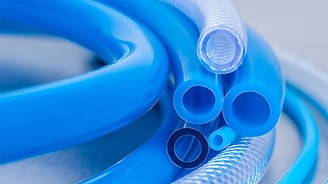
What Makes a Material Medical Grade?
Materials used in the healthcare and medical setting must often carry the title "medical grade." But what defines a material as "medical grade"? Biocompatibility refers...

ASTM Standards and Testing of Flexible Materials Used in Healthcare
The ASTM (formerly the American Society for Testing Materials, currently ASTM International) is an organization that develops and publishes consensus technical standards...

Outlook for Wearables and Smart Textiles
Advances in smart electronics have already produced a number of devices that are currently on the market. Textile manufacturers brought sensor-based smart wearables to...
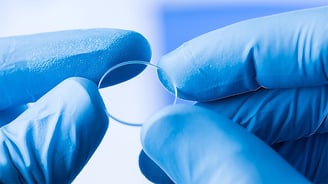
Applications of Auxetic Materials in Life Sciences
Auxetic materials are characterized by becoming thicker perpendicular to the applied force when stretched. This is caused by the way their particular internal structure...
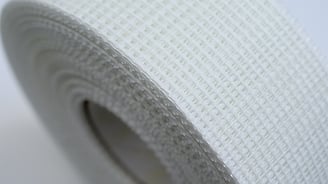
5 Types of Flexible Composites Transforming Your Healthcare
Simply put, a composite is a material made from two or more materials that have different properties. When combined together, the chemical and physical properties of the...

Can Nanotechnology Fight Antibiotic-Resistant Bacteria?
Over the last hundred years, antibiotics have been central to the extraordinary rate of improvement in medical technology. From swiftly curing basic infections to...
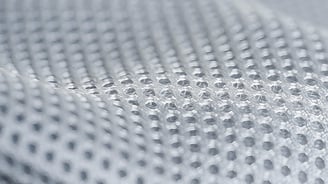
Technical Textiles in Bioprocessing
As in most industries, consumer demand is driving the rapid pace of growth in this field. Also contributing to the expansion in the medical arena is the availability of...

Recent Innovations on Biodegradable Materials & Transient Electronics
Transient electronics, also known as biodegradable electronics, is an emerging technology being explored across many fields and for various applications. When used in...

Innovative Thin Films for Drug Delivery
Considerations for developing a new drug delivery platform include ease of use (self-administration, convenient to swallow), route of administration (oral, transdermal,...

Recent Advances in Bioink Design for 3D Bioprinting
Despite recent advances in tissue engineering, there remains a lack of tissues and organs for transplantation and a shortage of tissue models for drug discovery and...

Flexible Printed Circuit Boards in Medical Device and Life Sciences
Flexible circuitry has been around for 115 years and its versatility across industries is unparalleled. Its uses and applications seem almost limitless. In fact, the...

Regulatory Overview of Leachables and Extractables in Flexible Medical Devices
Many factors affect the safety, suitability, and efficacy of the various medical devices used every day in the healthcare setting. Flexible medical devices are utilized...

Functionalizing Foams Used in Medical Applications
Many factors drive the advancements in wound care and the use of flexible materials in the medical field. Three major sectors are the aging population, increased...

Choosing the Best Medical Tape - Silicone Vs. Acrylic
Wound care presents many challenges to the medical professional. From the sheer variety of wound types to the differences among patients, a critical factor in all...

New Challenges to The Shrinking of Medical Devices
The sizes of medical devices are consistently trending smaller, a trend that is making a huge difference in the healthcare industry. These devices, including pacemakers,...

Technical Paper Helping to Revolutionize the Blood Draw Process
Drawbridge Health has developed a new way to draw blood. The company founded by GE Ventures is in the final testing phases of an innovative blood collection device that...

Wearable Technology and Flexible Materials
Wearable technology is no longer the wave of the future. It's the wave of the present--and flexible materials are playing an incredible role in the wearable technology...

The State of The In Vitro Diagnostics Industry & Trends
It is estimated that around 60 percent of all medical decisions are made with the support of in vitro diagnostic (IVD) testing. In vitro diagnostics are used to diagnose...

Single-Use Medical Disposables Smarten Up
As a result of the demand for sterilized materials, increased data, and high-quality health care, the medical industry has an enormous demand for single-use disposables....
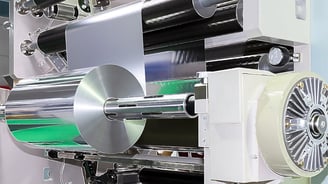
Biomedical Applications for Foil in Medical Devices & Wearables
Foil can be used to hold, protect, decorate, or dispense a wide range of materials and applications. Its unique properties facilitate its use for storage, distribution,...

Next Generation Disposable Medical Products
According to research, the demand for disposable medical supplies in the United States is expected to rise 4.2 percent each year, reaching $54.1 billion by the year...

Sustainable Barriers in the Medical Industry
With the medical and pharmaceutical industries facing compounded challenges when it comes to corporate social responsibility, the transition to environmentally...

Medical Technologies Emerging from the Technical Textiles Industry
Technical textiles encompass a vast array of textiles manufactured for strictly nominal purposes where utility is the primary principle. Technical textiles are...

How Flexible Materials Innovation Advances Wound Care and Closure
The cutting-edge of wound care is a progressively flexible one, where textiles, foams, and films are applied to wound management technology with the goal of synergistic...

Graphene Dialysis Membranes
One application's material defect is another's path to functionality. This is true of graphene, when taken beyond the realm of electronics and applied within the field...

Types of Biomaterials and Their Applications: Next-Generation Textile
Biomedical Engineers at the University of New South Wales have successfully created the prototype for a new functional textile based on the interwoven complexity of...

PVC Films Used in Medical Device Applications
Anyone who lives in a part of the world that has access to running water, electricity or sanitation services, has enjoyed some of the benefits of polyvinyl chloride film...

Demand for Cell Foam Applications Increasing with Medical Innovations
Analysts predict that the worldwide demand for medical foam will reach $31 billion by the year 2025. While many industries have used foams for years the medical industry...

Cooling Technical Textile Developed by Stanford Engineers
Technical textiles are being constantly developed to innovate the way medicine is practiced and to reshape patient experience. However, textiles are something that the...

The Impact of Flexible Materials Sourcing on Supply Chain Management
Getting from raw material to a final product is a multifaceted process that is prone to errors, inefficiencies, and delays. In the advanced flexible materials, the...

How Online Videos Have Optimized Researching Manufacturing Equipment
Technology is developing at a rapid rate in the Life Science and Medical Industries. Processes that were once carried out by hand, or developed with slow and tedious...

5 Tests Critical to the End Use Applications of Nonwovens
Nonwovens testing of physical and mechanical properties are essential to determining their end-use applications. For example, if a nonwoven has high absorptive capacity,...
/Photos%20Finished/BK2_4886_3%20Style_1200x600.jpg?width=328&height=187&name=BK2_4886_3%20Style_1200x600.jpg)
How to Improve Manufacturing Workflow: 5S and Gemba Walks
Every medical production facility strives to provide a safe and efficient work environment for its operators to succeed. When it comes to process improvement, the focus...
/Photos%20Finished/_BK25085_3%20Style%20(1200%20x%20600).png?width=328&height=187&name=_BK25085_3%20Style%20(1200%20x%20600).png)
5 Essential Activities of Current Good Manufacturing Practices
Medical Device manufacturing has to comply with FDA guidelines and regulations for tracking each and every step of the manufacturing process, including raw material...
/Photos%20Finished/_BK25948_3%20Style%20(1200%20x%20600).png?width=328&height=187&name=_BK25948_3%20Style%20(1200%20x%20600).png)
3 Keys to Strong Supply Chain Management
Supply chain management plays a key role in the success of any business. Building a strong relationship with your suppliers within your supply chain will allow you to...
/Photos%20Finished/_BK26207_3%20Style_1200x600.jpg?width=328&height=187&name=_BK26207_3%20Style_1200x600.jpg)
Continual Improvement Driven by Quality
If you are familiar with medical device manufacturing, certainly you have heard the phrase, “Quality over Quantity.” This phrase is commonly used to denote that it is...
/Photos%20Finished/Frontline03092021Production0616_3%20Style_1200x600.jpg?width=328&height=187&name=Frontline03092021Production0616_3%20Style_1200x600.jpg)
Identifying & Understanding the 8 Wastes
When considering potential waste in a medical manufacturing facility, most precision manufacturer’s first thoughts are only on the material waste. In fact, there are 8...

Effective Guidelines to Launch a Medical Device Product
Developing and commercializing a new product is an exciting and dynamic process. Unfortunately, more products fail to launch than actually do launch and many times this...

The FDA Regulatory Pathway for Premarket Notification 510(k)
The FDA regulatory pathway for Premarket Notification 510(k) is required by anyone who intends to market a Class I, II, or III device in the United States intended for...

Working with Flexible Foam in Medical Device Manufacturing
Flexible foam is readily used in medical device manufacturing ranging from simple shapes of single layer foam to more complicated adhesive bordered foam or island placed...
/Photos%20Finished/_BK25169_3%20Style%20(1200%20x%20600).png?width=328&height=187&name=_BK25169_3%20Style%20(1200%20x%20600).png)
Successfully Implementing a CAPA Process
The framework of corrective and preventive action (CAPA) can be intimidating to tackle; especially if you are in a new organization or one that does not already have an...

Don’t Let Your Supplier Write Your Material Specification
This seems obvious, doesn’t it? After all, it's your specification so why would you let another interested party define something so critical to you and your...

Understanding Composite Materials: Tapes
At first thought tapes sound like a simple concept; a long, narrow piece of material that is sticky on one side and used to hold things together. However, in the world...

How to Successfully Search Online for Advanced Flexible Materials
The process of online search and discovery has become a daily part of our lives. The days of walking blindly into a shop, picking through some things, and making a...
/Photo%20Finished/BK2_3507_3%20Style_1200x600.jpg?width=328&height=187&name=BK2_3507_3%20Style_1200x600.jpg)
Effectively Dual Source a Supply Chain for Advanced Flexible Materials
In advanced flexible materials markets dual sourcing is frequently discussed and commonly required, but how well it is executed is often times a different story. Most...

5 Simple Rules to Source Advanced Flexible Materials More Effectively
Material sourcing is a challenging task. It is both time consuming and difficult to identify high quality vendors of advanced flexible materials - such as flexible foam,...
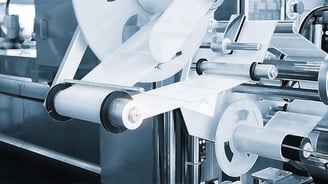
Understanding Composite Materials: Classifications
Composites can be a tricky material to classify and standardize because by their nature they are not very standard at all. This can be a challenge for sourcing teams,...
Articles
Expert analysis of the challenges biomedical innovators face every day—from regulatory strategy and design controls to manufacturing scale-up and market positioning. Each article delivers actionable insights you can implement immediately, written by the team that works alongside medical device companies navigating commercialization. Join a community of innovators who rely on these perspectives to guide their decisions.
Please feel out the form below and someone from our team will contact you shortly.
JOIN OUR NEWSLETTER
Get Quarterly Insights Delivered
Featured
Topics curated collections of articles
.webp?width=1921&height=1081&name=Content%20Card%20-%20Just%20Mighty%20-%20Boyd%20-%20Two%20Color%20-%20Full%20(1920%20x%201080).webp)
.png?width=401&height=401&name=Logo%20-%20Just%20Mighty%20-%20White%20Logo%20(400%20x%20400).png)
Your innovation Just Might change the world. But the odds are against you. We help you turn Just Might into Just Mighty.
JOIN OUR NEWSLETTER
Get Quarterly Insights Delivered
Stay informed with our quarterly newsletter featuring the latest case studies, industry reports, and innovation insights from leading biomedical companies. Join biomedical innovators who rely on our expert analysis to guide their commercialization decisions.
%20-%20Tint%20100.png?width=106&height=55&name=Logo%20-%20Standard%20-%20Blue%20(270%20x%20149)%20-%20Tint%20100.png)





.jpg?width=400&height=400&name=AdobeStock_346934311_3%20Style%20(800%20x%20800).jpg)
/Photos%20Finished/iStock-1137465658_3%20Style_800x800.jpg?width=400&height=400&name=iStock-1137465658_3%20Style_800x800.jpg)


/Photos%20Finished/iStock-1056384422_3%20Style_800x800.jpg?width=400&height=400&name=iStock-1056384422_3%20Style_800x800.jpg)




/Photos%20Finished/BK2_7998_3%20Style%20(800%20x%20800).png?width=400&height=400&name=BK2_7998_3%20Style%20(800%20x%20800).png)
/Photos%20Finished/BK2_1158_3%20Style%20(800%20x%20800).png?width=400&height=400&name=BK2_1158_3%20Style%20(800%20x%20800).png)
/Episode%207%20(Access%20Vascular)/Photos%20Finished/AccessVascular05222022BTS0051_3%20Style%20(800%20x%20800).png?width=400&height=400&name=AccessVascular05222022BTS0051_3%20Style%20(800%20x%20800).png)





